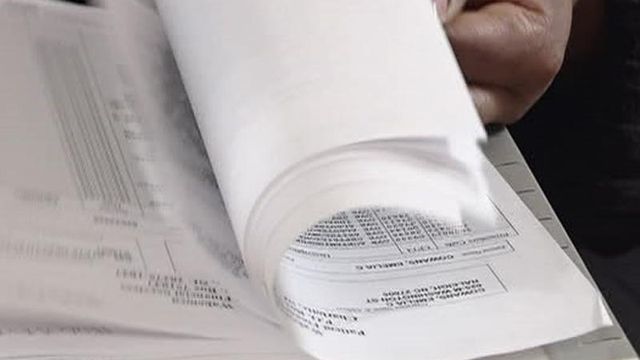The problem with high health care costs
Health care facilities have to pay for staff and services and also pay more to make up for the billions in costs the industry loses each year.
Posted — UpdatedThat's when the 37-year-old spent two months in a local hospital and nearly died while fighting the H1N1 flu virus.
"I feel absolutely fantastic," Cowens said.
Financially, though, she says she is in rough shape.
Her medical bills amounted to approximately $330,000, and even after insurance, her out-of-pocket expenses are still more than she can handle.
"(I have) stacks and stacks of bills. It's overwhelming," Cowens said. "It's hard to keep your head above water."
Dozens of bills have already been referred to collections agencies, she said.
"The real person caught in the middle is the working individual who's making a living and working as hard as they can but can't make ends meet," said Dr. Bill Atkinson, president and chief executive officer of WakeMed Health and Hospitals. "They're the classic underinsured."
Atkinson says the cost of health care is out of control.
"I think the cost of health care to the individual has really outstripped our ability to keep up with it," he said. "It is a crisis."
Atkinson says health care facilities also have to make up for the billions in health care costs they write off.
"Whatever the costs to provide health care in America is, it's simply divided up and put on the bill of whoever's paying," he said. "Many of the costs are out of our hands."
Some of the seemingly surprising amounts that patients see on their bills factor in the cost of doing business – a way for hospitals to pay salaries and to pay for services – Atkinson said.
"You'll notice on hospital bills that there is no charge for nurses or any other personnel," Atkinson said. "Everything it takes to run an organization 24 (hours), seven (days a week), 365 (days a year) is incorporated into those things you're charged for. Aspirin and other things sometimes carry the bulk of that cost."
A look at a recent itemized hospital bill, for example, lists two 500-miiligram tablets of niacin as costing $35 each.
At a membership warehouse club, such as Costco, a 150-count bottle of niacin sells for $13.89. The same bottle at a hospital would cost a patient approximately $2,625.
Atkinson, however, says it's not a fair comparison.
"I guess I'd say, go over to Costco and see if you can get a nurse, a doctor, a trauma center, a neonatologist 24/7/365," he said. "See what it takes to pay for a trauma surgeon to be here 24-7. They don't have that at Costco."
Cowens say doctors gave her a 1 percent chance of survival. Despite the hospital bills she now faces, she says she feels fortunate to have a clean bill of health.
She is now negotiating payment plans with creditors to help get her budget manageable again.
"For whatever reason, God spared me," she said. . So, I know I have a renewed sense of purpose, and he didn't bring me through that to have me depressed about those bills," she said.
Related Topics
• Credits
Copyright 2024 by Capitol Broadcasting Company. All rights reserved. This material may not be published, broadcast, rewritten or redistributed.





